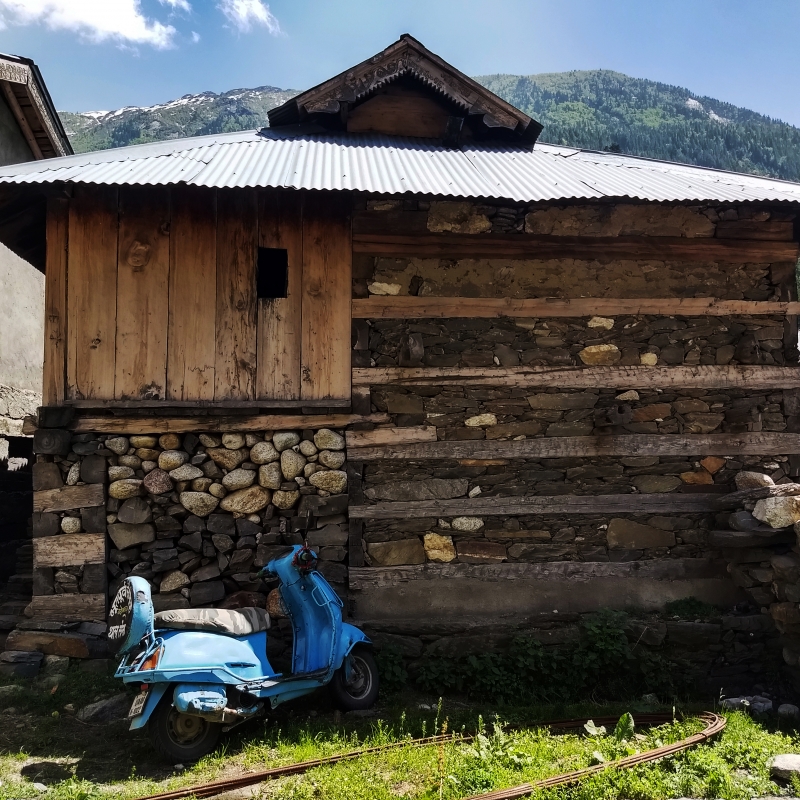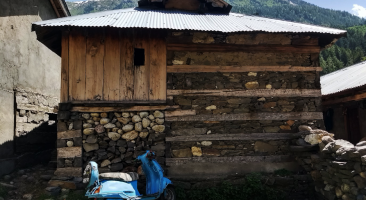Bagori village is an unexplored settlement of Jadh Bhotiyas, an ethno-linguistic tribal community en route to the Gangotri shrine on the banks of river Bhagirathi in the Garhwal Himalayas. Historically, the community was a pastoral nomadic tribe from the Nelang and Jadong valley of Uttarakhand. After the Indo-China War of 1962, they were relocated to Bagori and Dunda villages in Uttarkashi district.
Unlike the terraced or staggered arrangement of houses in the hilly regions, this village settlement is arranged in a linear manner. One-storey wooden houses flank the street on either side. The houses in the village are built with the indigenous building method of timber-reinforced stone masonry, an adaptation of the popularly known koti banal construction technique in Uttarakhand or kath kunni in Himachal Pradesh. The settlement pattern, spatial arrangement of the houses and the construction techniques are an amalgamation of occupational, cultural, geographical and historical responses to extreme climatic conditions and various hazards.


